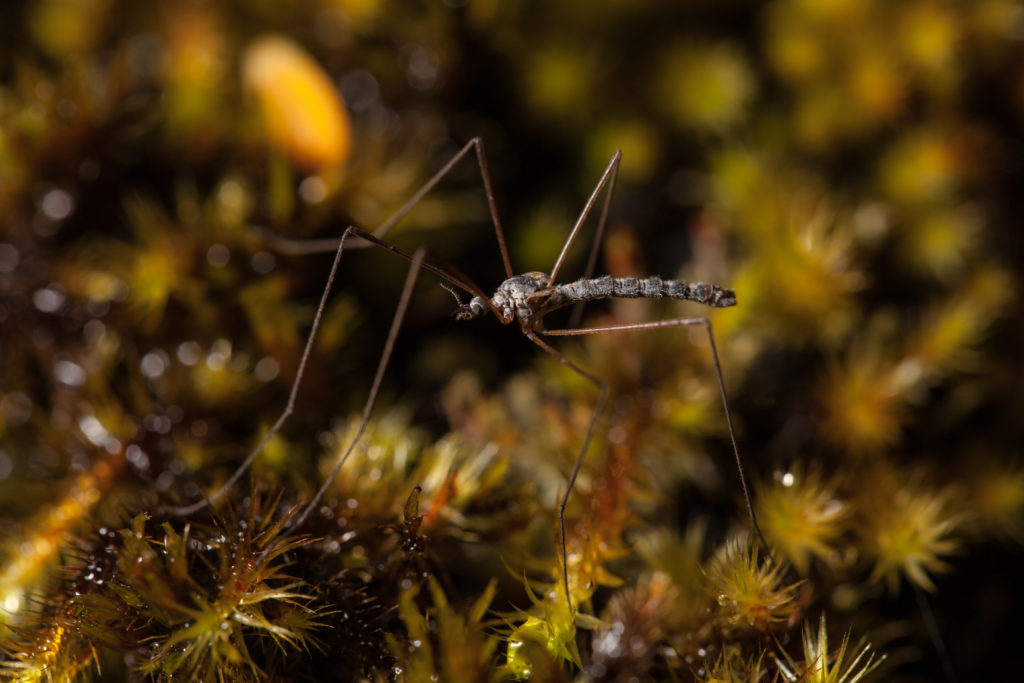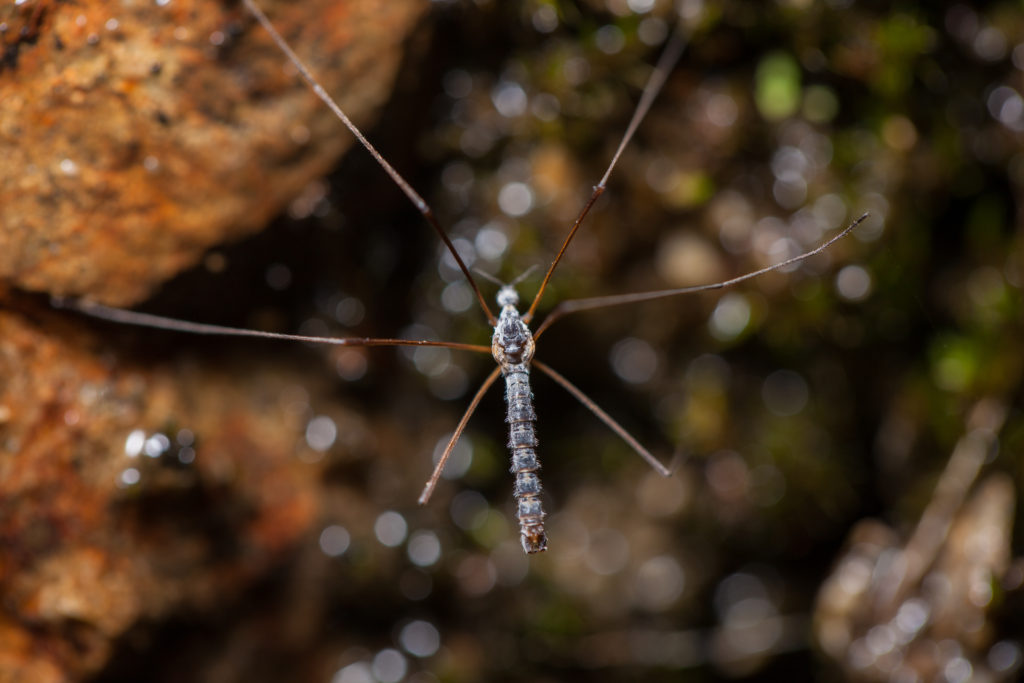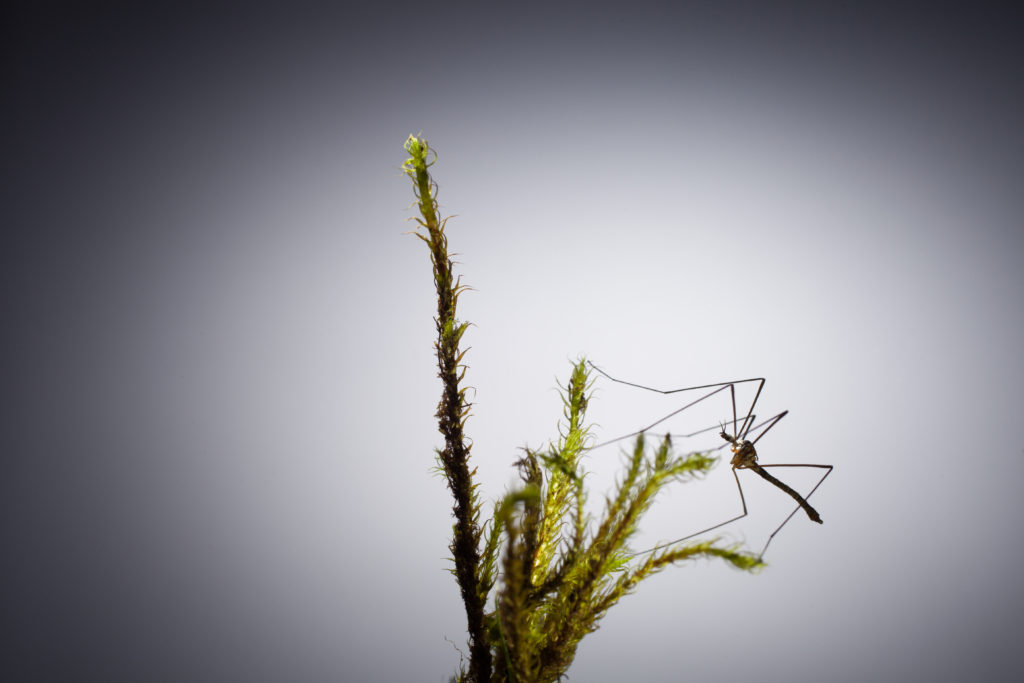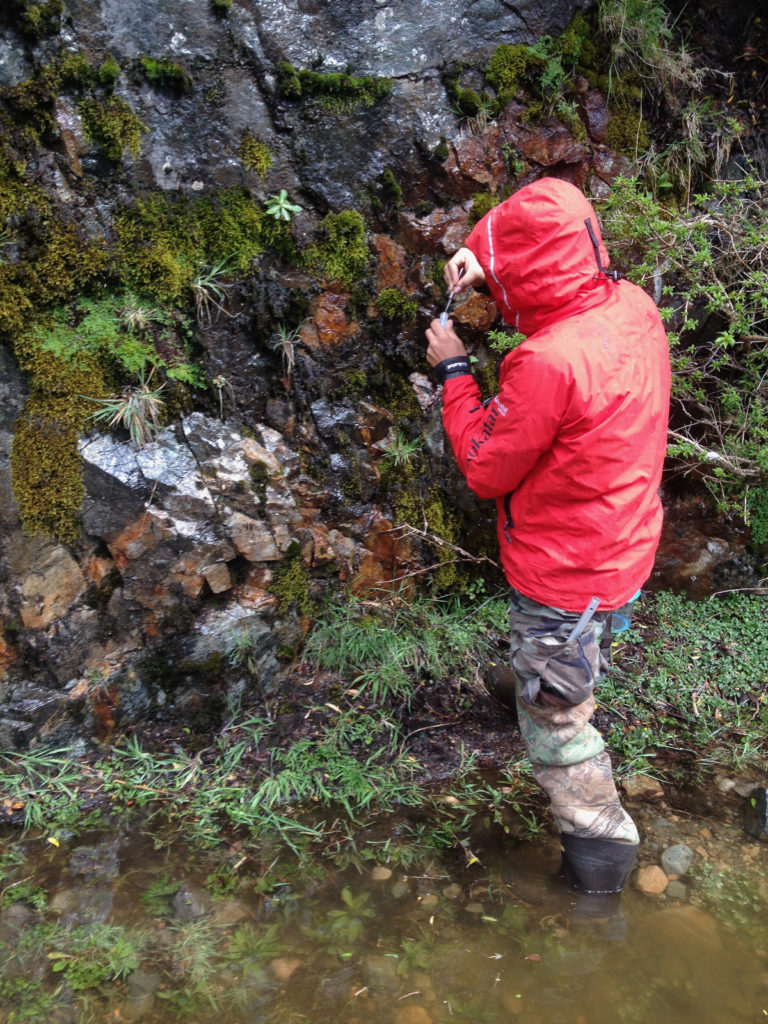It has finally pushed itself through the entangled root mats. Months of development feeding on wet detritus have come to an end. It will now emerge as a full-fledged adult.
The upper portion of its body hangs perpendicular to the rock wall, exposed to the elements. It begins to break free from its pupal skin, but something is wrong. One of its legs is ensnared in its old skin.
Moss-inhabiting spiders are on the hunt. It must hurry or its life cycle will be abruptly terminated.
As it broke free from its pupal skin, so did its leg from its body. The struggle was too much to bear for its soft joint.
Holding onto the hanging moss, it waits for its skin to harden. At last, its development is complete. The clasping structure at the end of its abdomen indicates it is a male.

Although his transformation is complete, his wings did not spread but instead remain as small nobs. He belongs to a poorly known group of flies, of which this species is particularly secretive as well as the only* known flightless species in Patagonia.
He moves along, climbing the moist vertical wall. In his path, strange orange mites with front legs longer than their entire body move across the moss, using their elongated appendages as guides. As he climbs up, small moth flies come out of a cavity behind the overhanging vegetation. With their short erratic flight pattern, they move along in search of a mate.

The recurrent rains have stopped, and with it the constant wind. The sun reaches the vegetation surface. The male stops on a small clearing to soak up the warming rays.
Nearby, large quantities of soil are evidence of a recent landslide, caused by increased water saturation from glacial melts and constant rains. Through the same process, mats of overturned moss rest on the few rock ledges, exposing rich substrate to those in search of nutrients.
The rain has returned; this time a cold wind turns the water into freezing rain. The male moves in search for cover but he is constantly knocked down by the water droplets dripping from the saturated substrate. He must find a mate before his short adult life comes to an end.

He ventures into a rock cavity but is driven away by a second, larger male. In a place where suitable habitat is scarce, territoriality is key to the survival of the individual.
With only three legs left on his body, the resident male shows scars of an eventful life.
As the intruder flees from confrontation, a resident moss spider nearby notices the event and captures the fleeing male. There is no escape from the arachnid’s mandibles. The young male’s lifecycle is terminated on the spot.
At the same time, a few inches away, inside its pupal skin, another crane fly has been spotted by a predatory slug. With only hours left to complete its development, the fly will never experience adulthood. The hungry gastropod slowly begins to consume the entrapped insect from its head down.
With the next window of favorable weather, the three-legged male ventures out of the safety of his crevasse. He finds a receptive female nearby, but a male of comparable size is already courting her.
The three-legged male knows his lifecycle is near its terminus and desperately disrupts the ongoing courtship. The battle unleashes. The courting male with all of his six legs has the upper hand.
The defending male frantically kicks the three-legged challenger. The soft joints at the bases of his elongated legs are the target. Shortly thereafter, the battle ends, with the courting male losing one of his back legs, but he succeeds in driving the challenger away. His prize: to mate. Contrarily, the loser is left with only two front legs. Struggling to hold onto the vertical wall, he drags himself to a nearby cavity behind the overhanging moss, where he will spend the remaining moments of his life.

*The author is currently performing an investigation to determine if the specimens in the pictures above belong to a new species.

